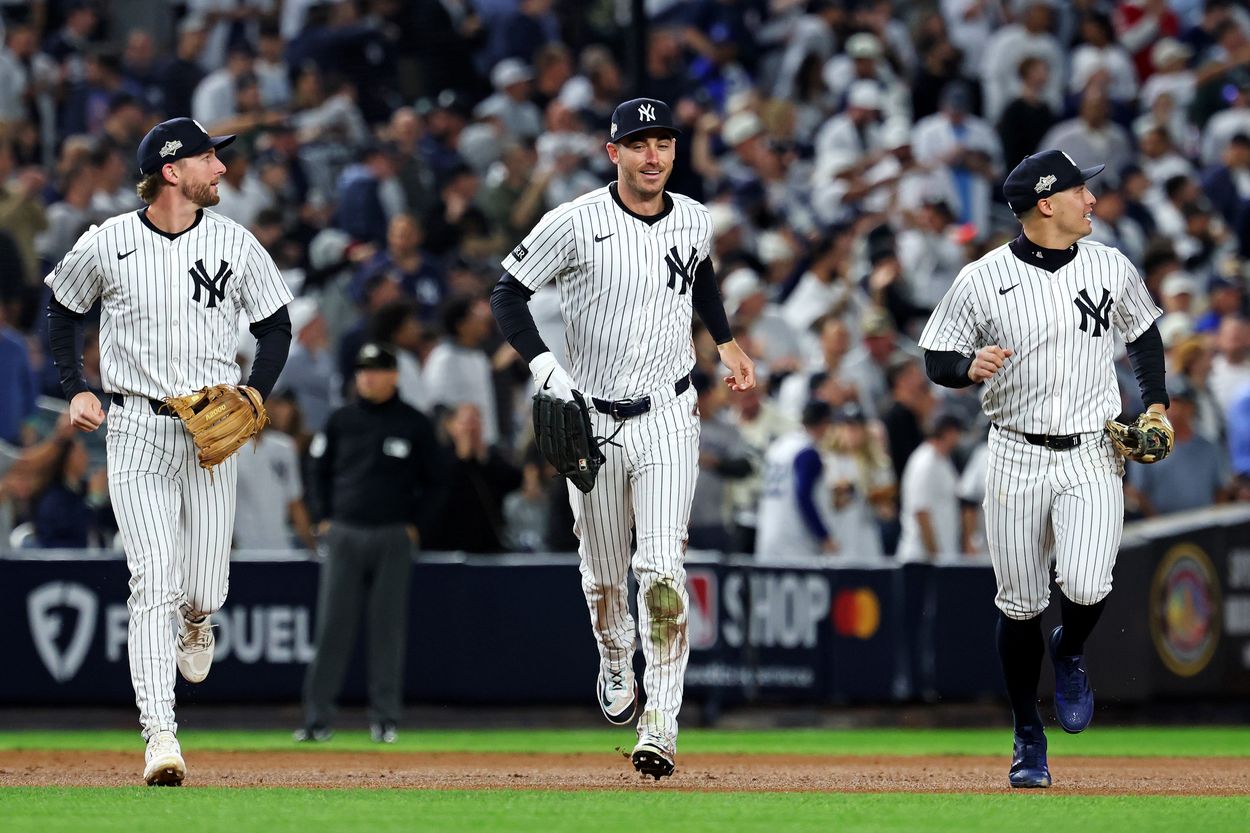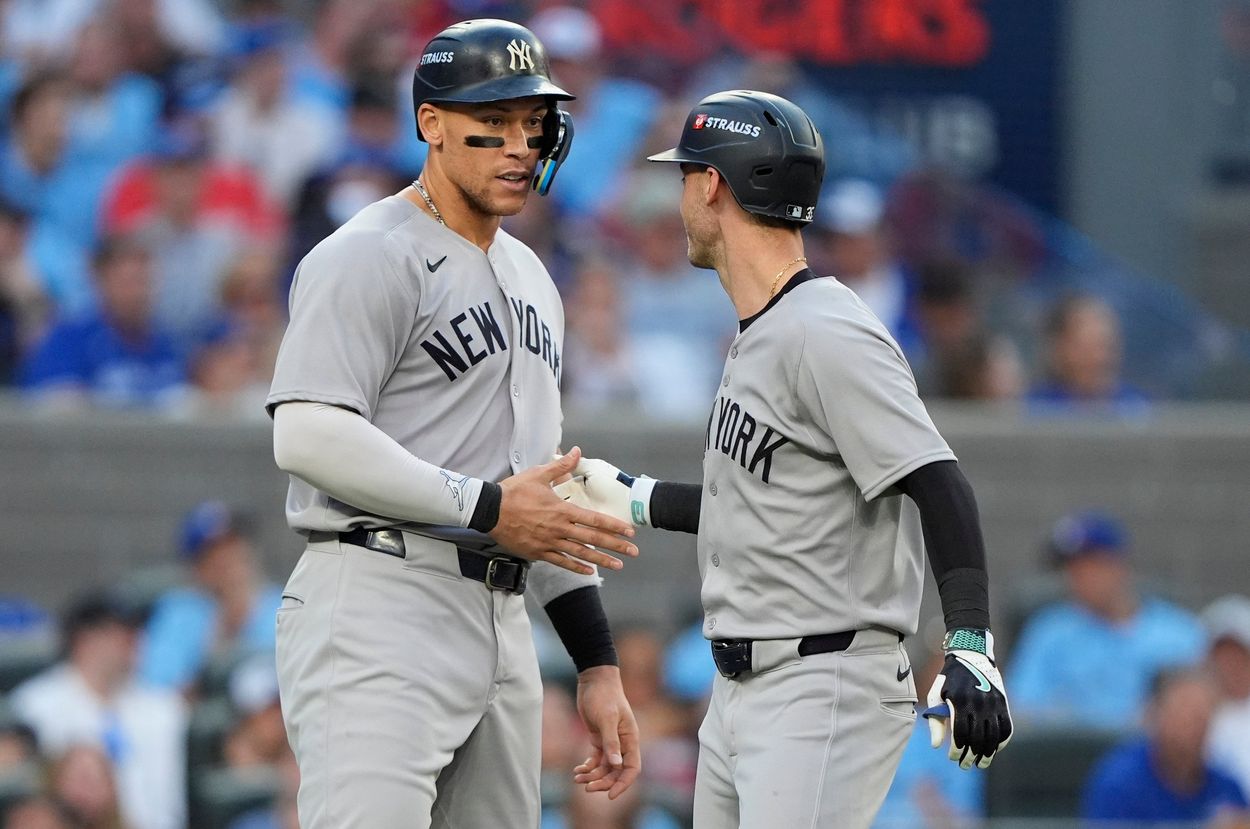
The New York Yankees have a choice to make that could shape the course of their roster for years to come. Cody Bellinger officially opted out of his $25 million player option for the 2026 season, forcing the Yankees to decide whether to bring him back on a long-term deal or pivot toward a younger, higher-upside option like Kyle Tucker.
It’s a decision that goes beyond just numbers. It’s about balancing reliability and risk, age and upside, and whether the Yankees believe Bellinger’s resurgence in 2025 is sustainable enough to justify another big commitment.
Bellinger’s resurgence makes his case strong
Bellinger reminded everyone of the talent that once made him one of baseball’s brightest stars. At 30 years old, he proved that when healthy and confident, he can be a game-changer in the middle of the lineup. This past season, he hit .272 with a .334 on-base percentage and .480 slugging rate across 152 games. He finished with 29 home runs, 98 RBIs, and a 125 wRC+, making him one of the Yankees’ most consistent producers.

Beyond the numbers, Bellinger’s versatility made him invaluable. He was able to play all three outfield spots and even filled in at first base when needed, offering Aaron Boone flexibility that few players provide. He also brought energy and poise to a Yankees clubhouse that desperately needed stability after a rocky first half.
Still, there’s no denying that Bellinger’s career has been streaky. He’s gone from MVP-level seasons to long stretches of inconsistency, which makes committing to another large contract a calculated risk for general manager Brian Cashman.
Kyle Tucker represents the high-upside alternative
Then there’s Kyle Tucker, the player who represents both the next step forward and the financial stretch that comes with it. Tucker, at 28 years old, is entering his prime and has been one of baseball’s most complete outfielders for the Houston Astros. This past season, he hit .266 with a .377 on-base percentage and .464 slugging rate, tallying 22 home runs and 73 RBIs while maintaining elite plate discipline.
Unlike Bellinger, Tucker’s production has been steady year after year. He rarely goes through prolonged slumps, he plays solid defense in the corner outfield, and his left-handed power swing would fit perfectly in Yankee Stadium.
The difference, however, lies in the price tag. Bellinger could command around $150 million on the open market, while Tucker’s deal could soar north of $300 million given his age, consistency, and skill set. That gap — roughly $150 million — will loom large in the Yankees’ internal discussions this winter.
The likely outcome favors familiarity
According to Mark Feinsand of MLB.com, the early belief is that the Yankees will try to bring Bellinger back.
“The most likely scenario in the eyes of rival executives is Bellinger returning to the Yankees, but when it comes to free agency, the only certainty is that things rarely play out as we all expect,” Feinsand reported.
That doesn’t mean it will be easy. Bellinger is expected to draw plenty of attention in free agency, with teams like the Mets, Phillies, and Tigers all expected to be in the mix. The Mets, in particular, have the financial resources and positional need to make things interesting, especially if they lose Pete Alonso.
For the Yankees, the question is whether familiarity and fit outweigh the allure of someone younger with a higher ceiling. Bellinger has already shown he can thrive under the New York spotlight, and his defensive versatility gives the Yankees flexibility as they shape their 2026 roster.

A pivotal decision for Cashman’s front office
This is the kind of crossroads that defines offseasons. The Yankees can invest heavily in a known quantity who has won over the fan base and proven he belongs, or they can swing for a younger star who may carry more long-term upside.
It’s not just a financial decision — it’s a philosophical one. Do they stick with the player who brought stability back to the outfield or take a leap toward a more expensive but potentially transformative talent?
The Yankees have time to weigh their options, but as free agency heats up, one thing is clear: whichever path they choose will send a message about how they plan to build around Aaron Judge and chase another shot at a title in 2026.
